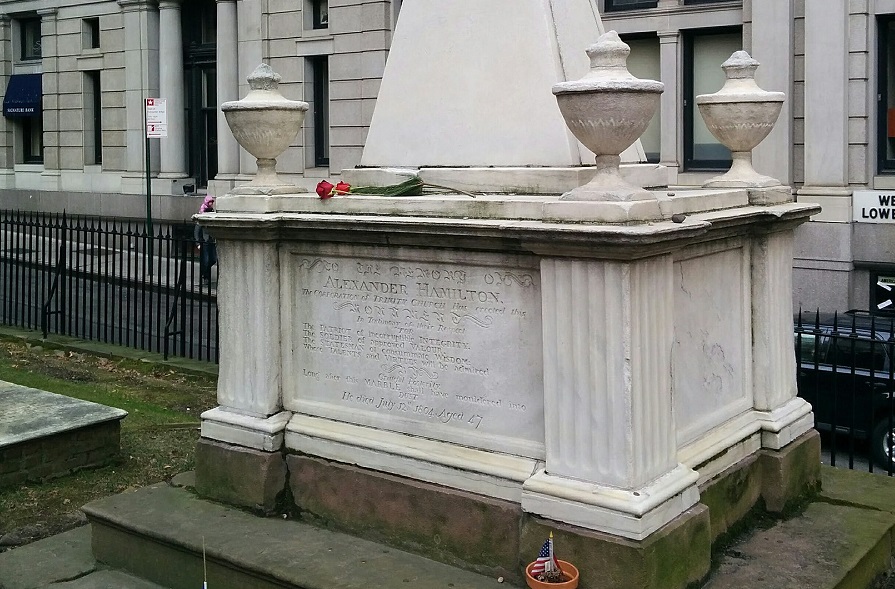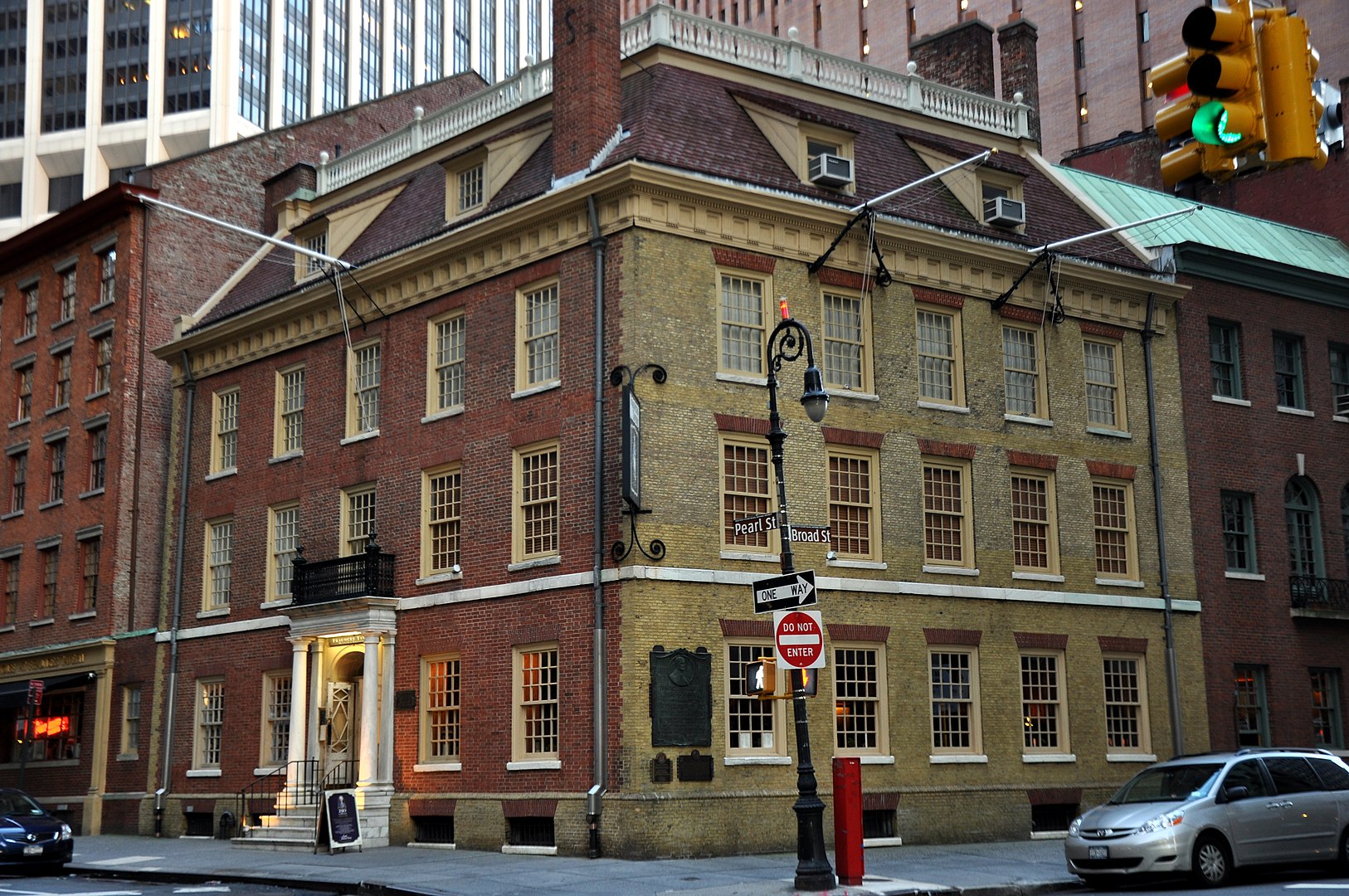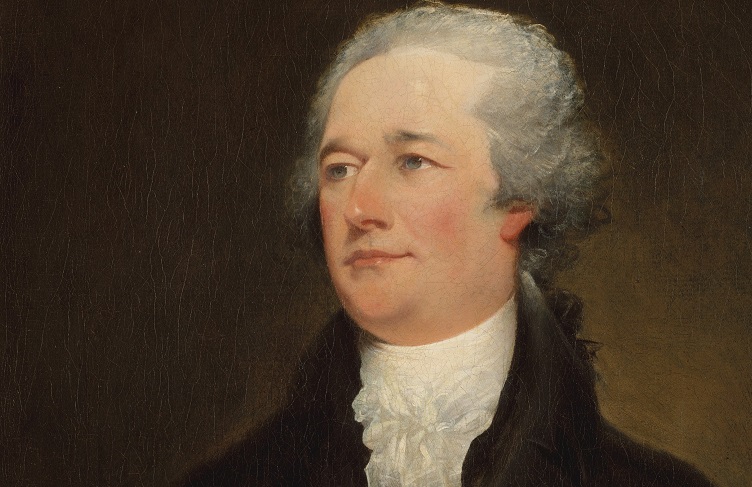See Where Hamilton Lived, Worked, and Played
Hey, remember the distant past, a hundred years ago, when you could walk into a Broadway theater with a bunch of other people and see actors dance and sing about Alexander Hamilton? Oh, that was only a few short months ago? Nah, that doesn’t feel right.
Anyway, a filmed version of the beloved musical Hamilton premieres on the Disney+ streaming service July 3rd. In less COVID-y times, we’d celebrate by inviting you to join Hamilton: The Scavenger Hunt, which highlights many of the places where the $10 Founding Father without a father lived and worked in lower Manhattan. (You can still virtually Escape to New York, of course.)
Instead, here are our picks for the 10 places with virtual tours, websites, and art if you want to walk in Hamilton’s footsteps in New York City.
Wall Street: His grave, his home, his workplace
This was basically New York City in the era of the revolution, and if you want to find the ghost of Hamilton you should start here. In many ways Hamilton’s economic policies made Wall Street the powerhouse it is today. So it’s fitting that he was laid to rest at the head of the street in the graveyard of Trinity Church. Check out this virtual tour featuring Alexander Hamilton’s grave and the rest of the graveyard.
A block away stands Federal Hall, the site of the city hall building that served briefly as the nation’s capitol. Hamilton attended George Washington’s presidential inauguration on the balcony here. Later, when a mob gathered here to protest the Jay Treaty with England, Hamilton tried to speak out and was pelted with rocks.
Hamilton lived farther down Wall Street and had an easy walk south to Fraunces Tavern, where upstairs he had his office as Secretary of the Treasury. At the end of the war he attended a party here at which Washington said farewell to his officers. Today a small museum shows a re-creation of the dining room and features other revolutionary-era exhibits. Watch this Tourist in Your Own Town video for a trip into Fraunces Tavern.
A few blocks north of Hamilton’s residence on Maiden Lane stood Thomas Jefferson’s home while Congress was camped in New York. According to Jefferson, his parlor was “the room where it happens,” as the Broadway show Hamilton musically puts it: the place where Jefferson and Madison agreed to endorse Hamilton’s economic policy in exchange for his agreeing to back the relocation of the capitol to the future Washington, D.C. A plaque on a bland office building marks the site today.
And in case you’re wondering, no, the man himself had nothing to do with the Alexander Hamilton U.S. Custom House. That opened in 1907, long after his death. It was named in his honor, since he was the first Secretary of the Treasury, and it’s certainly worth checking out.
Hamilton Grange: His home in the country
Hamilton’s elegant home, which he dubbed Hamilton Grange, now sits in a park at 141st St., near City College. Grange is a British term for a country house, which suited Hamilton’s aristocratic aspirations. In the subsequent two centuries, as the city grew around it, the house was increasingly hemmed in and had to be moved twice.
Under normal circumstances, the National Park Service gives tours of its period-decorated first-floor rooms, and the basement level has a one-room museum that provides a compressed Hamilton biography, from his Caribbean birth to his gun-duel death. The blog National Parks with T has compiled a virtual tour of Hamilton Grange, with a lot of great pictures. Or if video is more your speed, watch Jordan Fisher, who starred in Hamilton as Alexander’s son Philip, take a tour of the house.
The New-York Historical Society
Like every other museum in the city, this treasure trove of a museum is closed, but a simple search of its collection reveals some of its large assortment of Hamilton-related art and artifacts. Highlights include a bust of an idealized Hamilton that kind of looks nothing like him and a commemorative cane featuring Hamilton’s head.
The New-York Historical Society contains other pieces that any Hamilton fan should see, including pistols identical to the ones used in the fateful duel and Aaron Burr’s disturbing death mask.
Jane Street: Where Hamilton died?
Hamilton and Aaron Burr went across the Hudson River to duel in Weehawken, New Jersey, because the laws were more favorable to dueling there. The spot is now preserved as the Weehawken Dueling Grounds.
After Hamilton received his mortal wound, his friends rowed him back across the Hudson and brought him to a house on a farm in what is now Greenwich Village. He died there the following day. If you visit 82 Jane St., you’ll find a plaque outside marking the spot where the farmhouse stood.
Amusingly, that plaque is a mistake! According to a 1990 book on the history of Greenwich Village (via The New York Times), old maps showed the farmhouse would have been about a block farther north, along modern-day Horatio Street. Evidently unconcerned with that fact, the owner of 82 Jane St. simply had the plaque commissioned and installed in 1936, making his building instantly famous and historic.
The Metropolitan Museum of Art
After Hamilton’s death, demands for his portrait picked up, and painter John Trumbull made replicas. The Metropolitan Museum of Art displays theirs in the American period rooms, paired with a portrait of De Witt Clinton. It’s something of a joke on the Met’s part, since Hamilton often vied with the Clinton family for control of New York politics.
In 2013, Credit Suisse donated Trumbull’s important full-length portrait of Hamilton to the Met, which now co-owns it with the Crystal Bridge Museum of American Art in Arkansas.
~
Photo credits: Hamilton image courtesy of Walt Disney DTCI Media Center; Hamilton’s grave by Lahti213 – Own work, CC BY-SA 4.0; Fraunces Tavern by Arun De Joe – Own work, CC BY-SA 3.0; portrait via Met Museum



